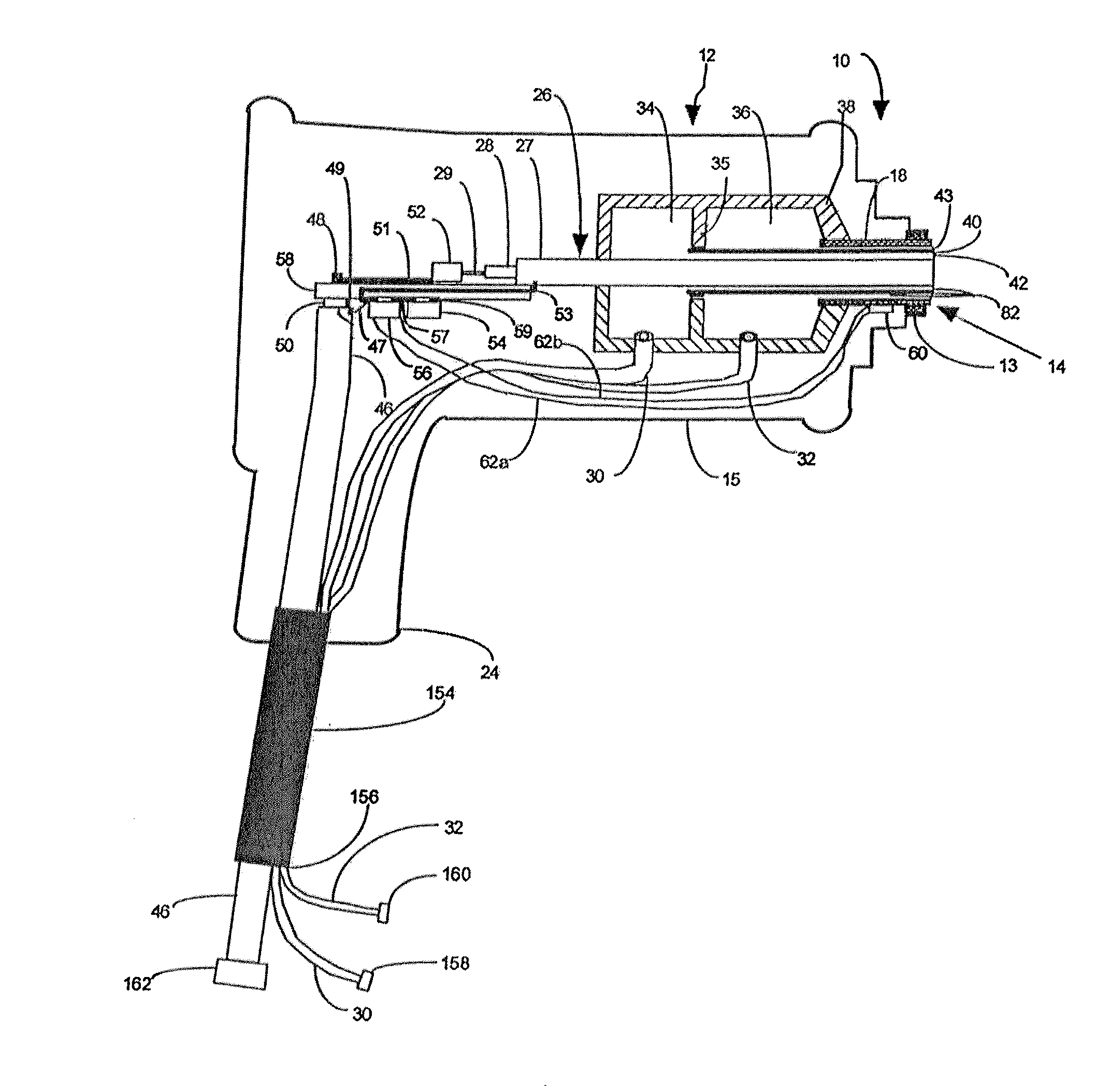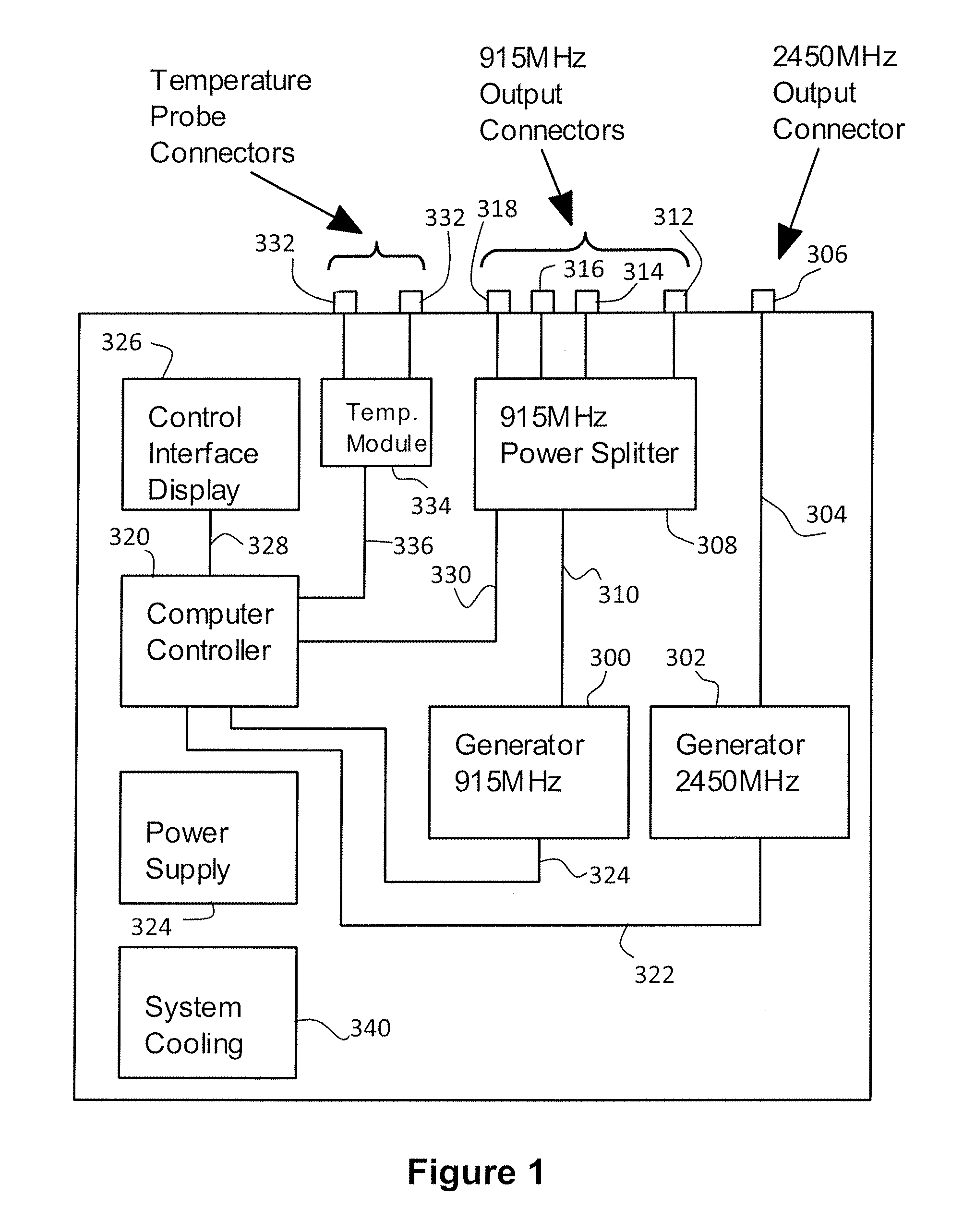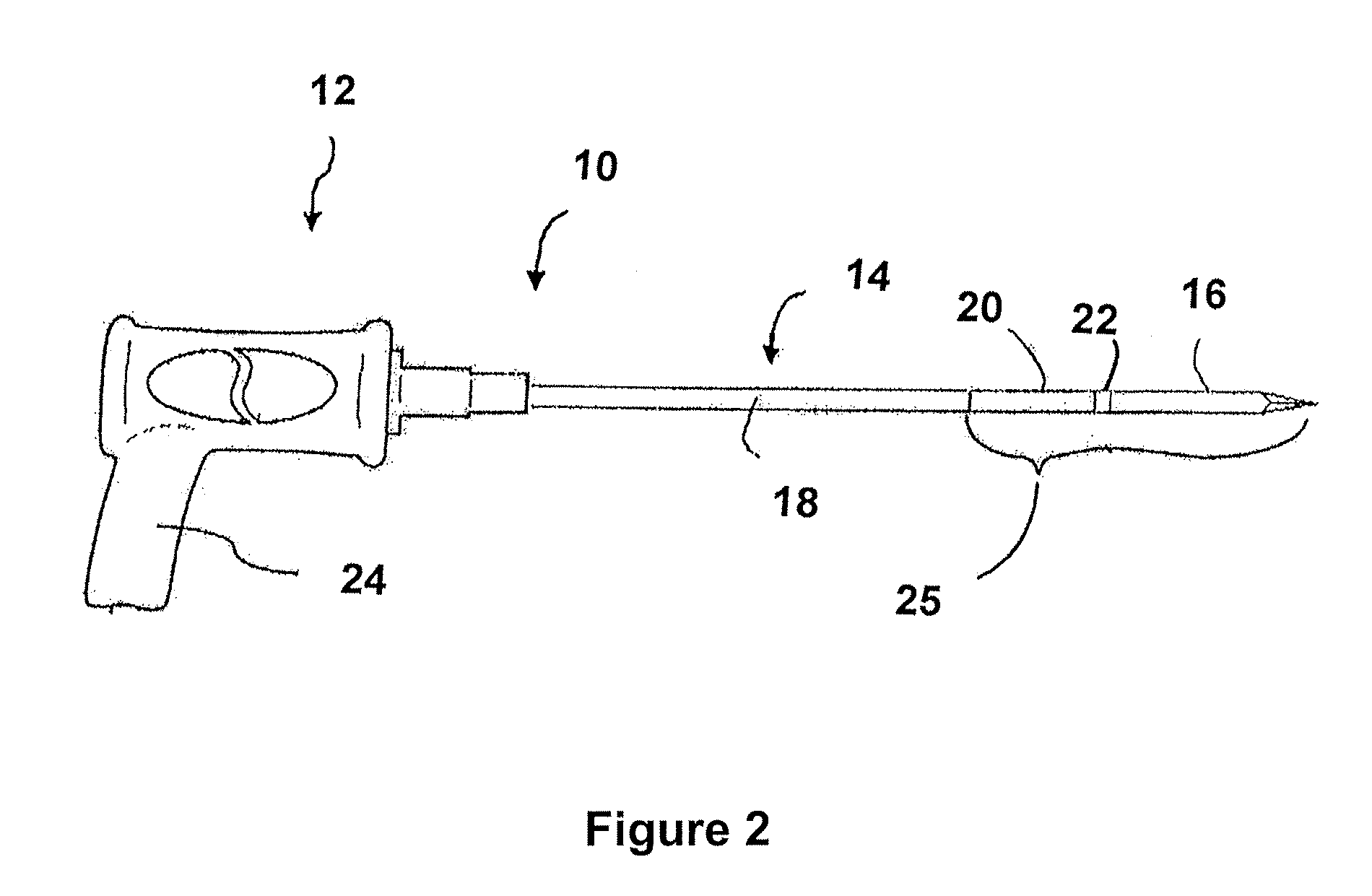[0019]A system of the invention, as described above, can provide the use of either 915 MHz microwaves or 2450 MHz microwaves during different treatment procedures or can provide both 915 MHz microwaves and 2450 MHz microwaves during the same
treatment procedure under common control by the single controller. Typically, when treating cancerous tumors, there may be
multiple tumors where some are large and some are small. A combined frequency system enables patient set up for
multiple tumors or even extended and larger portions of tumors to be treated using both frequencies simultaneously, multiplexed or time switched between frequencies, or sequentially with the same
patient treatment set-up and system. Further, the system can provide independent
automatic control and treatment of different target tumor zones automatically controlled by the common
system controller, typically a
digital computer, using a common interface to provide an operator with much easier and more practical treatment planning, set-up, and delivery. Having a fully integrated system with the same power supply, computer controller, computer interface display,
computer control software, and fans for providing cooling air flow to the single power supply all lead to major
cost savings and space savings compared to having a separate system for each frequency. Further, the system can provide the advantages of using common
tissue temperature monitoring and control, maintaining treatment
data records, and reduced
sedation times for the patient with more rapid
treatment delivery. Any applicator adapted for use with 2450 MHz can be connected to the 2450 MHz
power output connector and any applicator or applicators adapted for use with 915 MHz can be connected to the 915 MHz
power output connectors. A 915 MHz applicator satisfactory for use with the system is shown and described in detail in copending parent application Ser. No. 12 / 620,002 incorporated herein by reference.
[0021]In the one embodiment, the 915 MHz
signal generator and the 2450 MHz
signal generator can each be separate
narrow band tuned
microwave generators that can provide relatively high efficiency of input vs. output power of typically 50% to 70%. A generator that is variable in frequency, such as a tunable
broadband generator which can be adjusted over a frequency range that would include 915 MHz and 2450 MHz typically operates at much lower efficiency between about 6% to possibly 20%. Thus, the use of the separate
narrow band tuned microwave generators provides much
higher power efficiency to the system. The poor efficiency of the variable frequency
microwave power generator requires much higher input power which means that the power supply supplying the input power to such a variable frequency
signal generator would need to be more than 3 times larger and higher rated than a power supply supplying a single
narrow band generator, and still much larger than a power supply capable of supplying power to two narrow band generators simultaneously. The larger the power supply, the more heat generated which requires more
airflow cooling and
fan noise to remove the extra internally generated heat, and the more heat being discharged into and heating the
treatment room. The increased system efficiency provided by the increased efficiency of the narrow band tuned microwave generators allows much smaller equipment packaging, lower cooling
noise, and less heat discharged into the treatment environment.
[0022]While the system can provide for simultaneous operation of both the 915 MHz
signal generator and the 2450 MHz
signal generator so that, if and when desired, both 915 MHz and 2450 MHz
microwave power can be supplied to both the 915 MHz applicator or applicators and the 2450 MHz
microwave applicator simultaneously, such a system requires a power supply having sufficient
power output to power both generators at their maximum power requirement simultaneously. Substantially the same results can be obtained by operating only one of the microwave signal generators at a time, with the capability of quickly switching between the signal generators, thereby lessening the power output requirements for the power supply and the overall system. Since the
tissue heating is a result of the average
power absorption in the tissue, it does not matter whether the power applied is pulsed, time sequenced, or
continuous wave if the average power is the same and the time cycle is not more than up to about twenty seconds. With such an arrangement, a physician can install both 915 MHz and 2450 MHz applicators during an applicator positioning period and have the system ready to apply treatment through an array of 915 MHz antennas and sequentially or periodically through the 2450 MHz antenna. This can be provided by a timed switching between the two signal generators, or switching under manual control when the physician is ready to switch to the other antenna and frequency. This can be done quickly moving from one
treatment field to the other possibly neighboring field where a rapid back and forth switching (
multiplexing) allows the ablated zone of the first treatment to retain its temperature while applying microwave energy to the other, and back and forth to maintain the treatment temperature in both fields or zones. If time switched during the same procedure, the whole region will remain at ablation temperatures provided by time gated switching between the two frequency
modes to provide a larger and more tailored ablation pattern than that which the
phased array at 915 MHz might achieve alone. This can also provide for simultaneous heating of smaller tumors at 2450 MHz while larger tumors are treated at 915 MHz by having the system doing
time switching of its operation between the two frequency operating
modes. This switching is possible only with the provision of the two separate generators to which the appropriate applicators can be connected through separate connections and both generators are controlled by a common controller.
 Login to View More
Login to View More  Login to View More
Login to View More 


